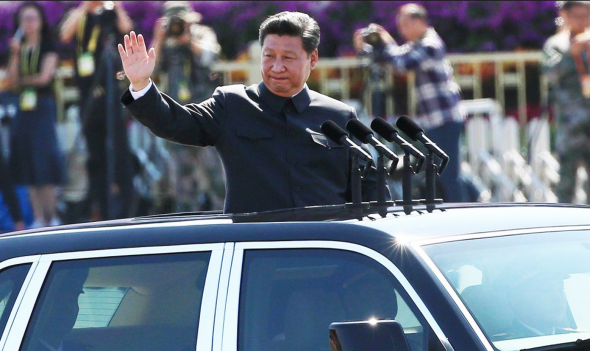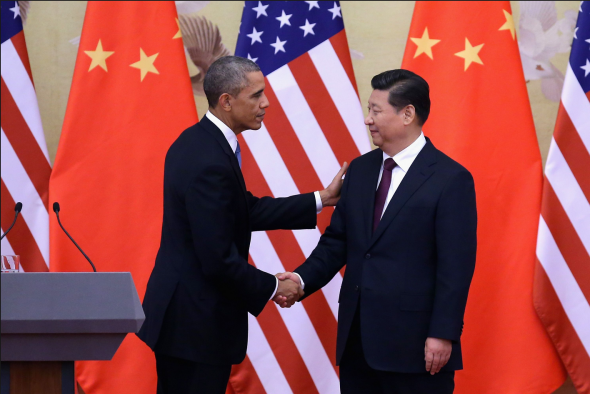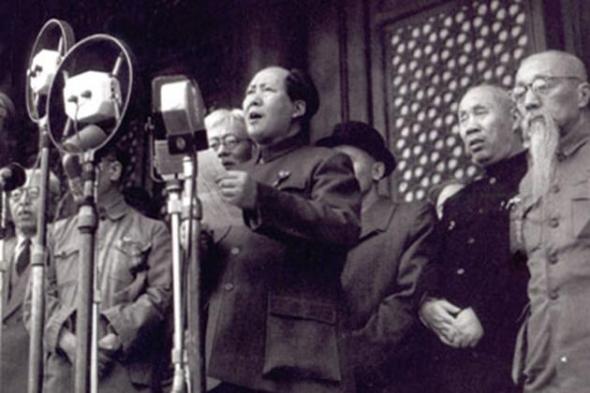Posted: May 31, 2019 | Author: Rick Dunham | Filed under: Discovering China | Tags: Avenue of the Animals, Beijing, Beijing tourism, China, China tourism, Cultural Revolution, Dingling, Forbidden City, Hidden Gems of Beijing, Jundu Mountains, Li Zicheng, Mao Zedong, Ming Tombs, Mongolia, Nanjing, Sacred Way, Spirit Way, tourism, Wangli, Yongle |
This slideshow requires JavaScript.
The Ming Tombs are often overshadowed on the Beijing tourist trail by the nearby Great Wall, one of the world’s greatest wonders. In the past, en route to the Great Wall, I’ve quickly visited the publicly open parts of the 13 tombs of Ming Dynasty emperors buried in an arc-shaped valley at the foot of the Jundu Mountains, about 40 km north of the Forbidden City.
The second Ming emperor, the Yongle Emperor Zhu Di, decided to build royal tombs in his northern capital of Beijing in 1420 rather than the southern capital, Nanjing, chosen by his predecessor because of its distance from the Mongolian frontier. The tombs themselves have been ransacked and emptied of valuables, starting in 1644 when the rebel army of Li Zicheng’s ransacked and burned many of the tombs as he advanced toward Beijing, where the last Ming emperor committed suicide shortly thereafter. But the glorious structures remain.
Today, there are three public museum sites among the 13 tomb locations. It’s a massive, sprawling complex that stretches over 40 square kilometers. I feel sorry for the tourists who never get to visit the tombs because of the even-more-famous sights to see in Greater Beijing.
Off the beaten path of tourist Beijing, the tombs have their own fascinating history that touches the contradictions of modern (and ancient) China. After the Yongle Emperor built the Forbidden City in Beijing in 1420, he decreed that a burial site be found to house the remains of future Ming emperors. Four years later, his was the first of 13 mausoleums built in a verdant valley beneath the Jundu Mountains, not far from the Great Wall.
The place has been ransacked repeatedly in the six centuries that have followed, most notably during the revolution that preceded the fall of the Ming Dynasty and the Cultural Revolution that followed the rise of Mao Zedong. Its tombs have been raided for political and pecuniary purposes. But its Sacred Way, sometimes known as the Spirit Way or the Avenue of the Animals, remains as a reminder of the permanence of Chinese history, despite its periodic revision.
A final contradiction: A photo of Mao admiring one of the spirit elephants is posted on the Sacred Way, but Red Guards a few years later seized the remains of Emperor Wanli from the Dingling tomb, posthumously “denounced” him and burned his remains, along with his Empress.
Posted: September 21, 2015 | Author: Rick Dunham | Filed under: Breaking news, Discovering China, U.S. politics | Tags: Barack Obama, Bernie Sanders, Binyamin Netanyahu, China, Chinese economy, Chris Christie, Communist Party, Dan Quayle, Deng Xiaoping, Donald Rumsfeld, Donald Trump, Franklin D. Roosevelt, George H.W. Bush, George W. Bush, Hassan Rohani, Henry Kissinger, Japan, Jeb Bush, Jim Mann, John Kerry, Mao Zedong, Margaret Thatcher, Michael Keaton, Mr. Mom, Nancy Pelosi, Pat Buchanan, Paul Prudhomme, peace, Philadelphia Inquirer, Pope Francis, Raul Castro, Rick Perry, Ronald Reagan, Shinzo Abe, Ted Cruz, terrorism, The China Fantasy, United States, Vladimir Putin, Wang Jiarui, Washington Post, world peace, Xi Jinping |

Images of Xi Jinping at the Sept. 3 military victory parade were shared around the world. But who is the Chinese leader and what does he stand for?
Chinese President Xi Jinping is coming to the United States, and very few Americans (or even American journalists) know much about the leader of the nation’s most populous country.
With apologies to Vladimir Putin, he has been called the most powerful leader in the world. But what does that mean?
Is Xi a reformer? Is he a hardliner? Is he a step forward, a step back — or both? Is he firmly in control or fearful of rivals within the ruling elite — or both? Is “Big Daddy Xi” widely popular or the beneficiary of a manufactured cult of personality?
As much as I’ve learned about China over the past two years, I still have a lot to learn. For additional background, I recommend you check out my former Philadelphia Inquirer colleague Jim Mann’s recent commentary in the Washington Post:
For American pundits, China isn’t a country. It’s a fantasyland.
In the meantime, test your knowledge of who Xi Jinping is — and isn’t — by taking this news quiz. Which of these statements are from Xi and which are from other world figures? Good luck.
For answers, scroll to the bottom of the post, after the final photo. Click on the quotations to read the original source material.

President Barack Obama and Xi Jinping have been careful to treat the other with respect and discuss fundamental disagreements without alienating the other nation’s leadership.
Who said the following?
1. Japan is “eating our lunch.”
a) Xi Jinping
b) Donald Trump
c) Paul Prudhomme
2. “(We must) make terrorists become like rats scurrying across a street, with everybody shouting ‘beat them!’”
a) Xi Jinping
b) George W. Bush
c) Donald Rumsfeld
3. “Some foreigners with full bellies and nothing better to do engage in finger-pointing at us.”
a) Xi Jinping
b) Pat Buchanan
c) Chris Christie
4. “America must be a light to the world, not just a missile.”
a) Xi Jinping
b) Barack Obama
c) Nancy Pelosi
d) George H.W. Bush
5. A cooperative United States-China relationship is “essential to global stability and peace.”
a) Xi Jinping
b) Barack Obama
c) Henry Kissinger
6. “To build a community of common destiny, we need to pursue common, comprehensive, cooperative and sustainable security.”
a) Xi Jinping
b) George W. Bush
c) Margaret Thatcher
d) Ronald Reagan
7. “Our people love life and expect better education, more stable jobs, better income, more reliable social security, medical care of a higher standard, more comfortable living conditions, and a more beautiful environment.”
a) Xi Jinping
b) Pope Francis
c) Raul Castro
d) Barack Obama
8. “Japan is not being nice to us.”
a) Xi Jinping
b) Donald Trump
c) Franklin D. Roosevelt
d) Theodore Roosevelt
9. “Resolute and decisive measures must be taken and high pressure must be maintained to crack down on violent terrorists who have been swollen with arrogance.”
a) Xi Jinping
b) Barack Obama
c) Binyamin Netanyahu
10. “I know what America is. America is a thing you can move very easily, move it in the right direction. They won’t get in our way.”
a) Xi Jinping
b) Barack Obama
c) Binyamin Netanyahu
11. “The international forces are shifting in a way that is more favorable to maintaining world peace.”
a) Xi Jinping
b) Shinzō Abe
c) Barack Obama
c) Hassan Rohani
12. “We should uphold the idea that working hard is the most honorable, noblest, greatest and most beautiful virtue.”
a) Xi Jinping
b) Margaret Thatcher
c) Marco Rubio
d) Ronald Reagan
13. “When did we beat Japan at anything?”
a) Xi Jinping
b) Donald Trump
c) Michael Keaton in “Mr. Mom”
d) The captain of the U.S. Olympic baseball team
14. “Our strength comes from the people and masses. We deeply understand that the capability of any individual is limited, but as long as we unite as one, there is no difficulty that we cannot overcome.”
a) Xi Jinping
b) Bernie Sanders
c) Mao Zedong
d) Ronald Reagan
15. “Economic growth … is going to come from the private sector. But the No. 1 thing government can do to encourage that growth is get out of the way.”
a) Xi Jinping
b) Deng Xiaoping
c) Ted Cruz
16. “As Deng Xiaoping said, we must ‘seek truth from facts.’ ”
a) Xi Jinping
b) Barack Obama
c) George H.W. Bush
17. “People should not underestimate me.”
a) Xi Jinping
b) George W. Bush
c) Bernie Sanders
d) Vladimir Putin
18. “The Communist Party is keenly aware one of the reasons its predecessor in China, the Nationalists, lost the Chinese civil war in 1949 was because of the terrible corruption under their rule, costing them public support.”
a) Xi Jinping
b) Henry Kissinger
c) Jim Mann, American journalist and author of The China Fantasy
d) Wang Jiarui, head of the Communist Party of China’s international department
19. “When China and the United States work together, we can be an anchor for world stability and the propeller of world peace.”
a) Xi Jinping
b) George W. Bush
c) Dan Quayle
d) Rick Perry
20. “Our two nations are poised to take an historic step forward on the path of peaceful cooperation and economic development. I’m confident that our trip will be a significant success, resulting in a stronger U.S.-China relationship than before. For Americans, this will mean more jobs and a better chance for a peaceful world.”
a) Xi Jinping
b) Barack Obama
c) John Kerry
d) Ronald Reagan
Answers below this photo.

XI Jinping is honored in Iowa, where he lived several decades ago.
1.b; 2.a; 3.a; 4.c; 5.c; 6.a; 7.a; 8.b; 9.a; 10.c; 11.a; 12.a; 13.b; 14.a; 15.c; 16.b; 17.c; 18.d; 19.a ; 20.d
Posted: October 2, 2013 | Author: Rick Dunham | Filed under: Discovering China | Tags: Beijing, Caroline Ward, China, Forbidden City, Fourth of July, Mao Zedong, National Day, National Mall, Sara Balajthy, Texas on the Potomac, Tiananmen, Tiananmen Square, Washington |

An indelible image that changed world history — October 1, 1949.
On Oct. 1, 1949, Mao Zedong read a statement before a bank of microphones and hundreds of thousands of people assembled in Tiananmen Square declaring the formation of the People’s Republic of China.
Sixty-four years later, I was one of the perhaps dozens of “westerners” visiting Beijing’s most famous landmark on China’s National Day holiday. It is a festive celebration, with special decorations, tourist-friendly hats, face painting, parades and family pilgrimmages.

The Lion and Mao. (Photo by Rick Dunham)
The scene, I thought, was very much like the Fourth of July celebrations on the National Mall in Washington. Patriotism, pageantry, family, country.
My small group of three Americans (thanks, Caroline and Sara) tried to blend in with the hundreds of thousands — more probably, millions — of Chinese tourists. Well, we were never going to blend in. Caroline and Sara are striking young blondes, and perhaps a dozen Chinese families asked to have their photos taken with them. (Nobody asked me.)
We walked around Tiananmen, headed inside the main gate toward the Forbidden City, and then wandered through the historic core of old Beijing.
I hope this photo essay gives you a sense of the grandeur and the scope of the day.
This slideshow requires JavaScript.





Recent Comments